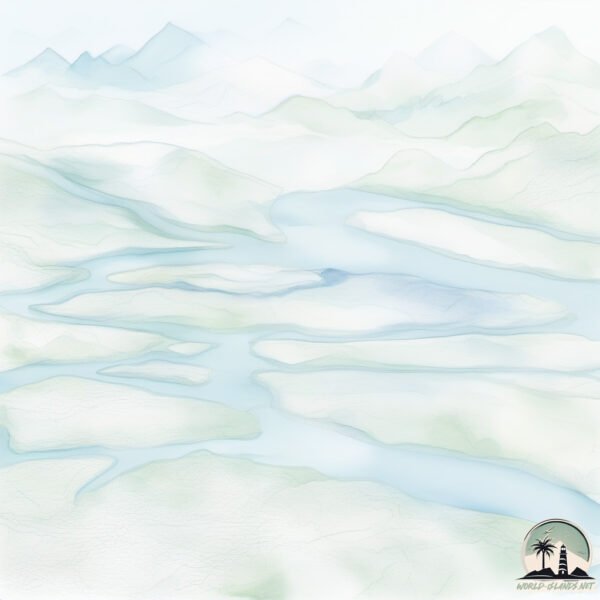Welcome to Ymer , a Polar island in the Greenland Sea, part of the majestic Arctic Ocean. This guide offers a comprehensive overview of what makes Ymer unique – from its geography and climate to its population, infrastructure, and beyond. Dive into the details:
Geography and size of Ymer
Size: 2391 km²Coastline: 528 kmOcean: Arctic OceanSea: Greenland SeaContinent: North America
Ymer is a Very Large Island spanning 2391 km² with a coastline of 528 km.
Archipel: –
Tectonic Plate: North America – Covers North America and parts of the Atlantic and Arctic Oceans, characterized by diverse geological features and varying levels of seismic activity.
The geographic heart of the island is pinpointed at these coordinates:
Climate and weather of Ymer
Climate Zone: PolarClimate Details: TundraTemperature: Cold
Climate Characteristics: The tundra climate features long, extremely cold winters and short, cool summers. Vegetation is limited to mosses, lichens, and small shrubs due to the low temperatures and short growing seasons. Biodiversity is low, but some specialized species thrive.
Topography and nature of Ymer
Timezone: UTC-03:00Timezone places: America/Sao_PauloMax. Elevation: 1900 m Angelin BjergMean Elevation: 743 mVegetation: Herbaceous CoverTree Coverage: 16%
The mean elevation is 743 m. Dominating the island’s landscape, the majestic “Angelin Bjerg” rises as the highest peak, soaring to impressive heights. The island is characterized by Mountains: High, steeply elevated landforms. Characterized by both a high maximum elevation (over 500 meters) and a high mean elevation, creating rugged, mountainous terrains on islands.
Dominating Vegetation: Herbaceous Cover
Vegetation: 6 vegetation zones – Very Highly Diverse Island
Infrastructure and Travelling to Ymer
Does the island have a public airport? no .
Does the island have a major port? no .
The mean population of Ymer is 0 per km². Ymer is Uninhabited. The island belongs to Denmark .
The name of the island resonates across different cultures and languages. Here is how it is known around the world: Arabic: جزيرة غرينلاند; German: Grönland; Spanish: Groenlandia; French: Groenland; Portuguese: Groenlândia; Russian: Гренландия; Chinese: 格陵兰岛
Continuing your journey, Geographical Society is the next notable island, situated merely km away.
Autumn in Isfjord & Ymers Øya, NE Greenland
Deep in the East Greenland fjords, a lone hungry polar bear walks the shore of Renbugten in Isfjord. It has probably eaten little ...
Autumn in Isfjord & Ymers Øya, NE Greenland
Deep in the East Greenland fjords, a lone hungry polar bear walks the ...
Deep in the East Greenland fjords, a lone hungry polar bear walks the shore of Renbugten in Isfjord. It has probably eaten little ...
Appointment In Greenland (1951)
Full title reads: "Appointment in Greenland". Introductory intertitle ...
Full title reads: "Appointment in Greenland". Introductory intertitle reads: "Pathe Cameraman Baynes flies with RAF to pick up ...
This is the World's Most Remote Island..
The World's Most Remote Islands are the Pitcairn Islands located in ...
The World's Most Remote Islands are the Pitcairn Islands located in the south pacific ocean. The town here is known as ...
Denmark is classified as Developed region: nonG7: Developed economies outside of the Group of Seven, characterized by high income and advanced economic structures. The level of income is High income: OECD.
News – Latest Updates and Headlines from Ymer
Stay informed with the most recent news and important headlines from Ymer. Here’s a roundup of the latest developments.
Loading...
Social Media Posts about Ymer
Loading...
Please note: The data used here has been primarily extracted from satellite readings. Deviations from exact values may occur, particularly regarding the height of elevations and population density. Land area and coastline measurements refer to average values at mean high tide.

